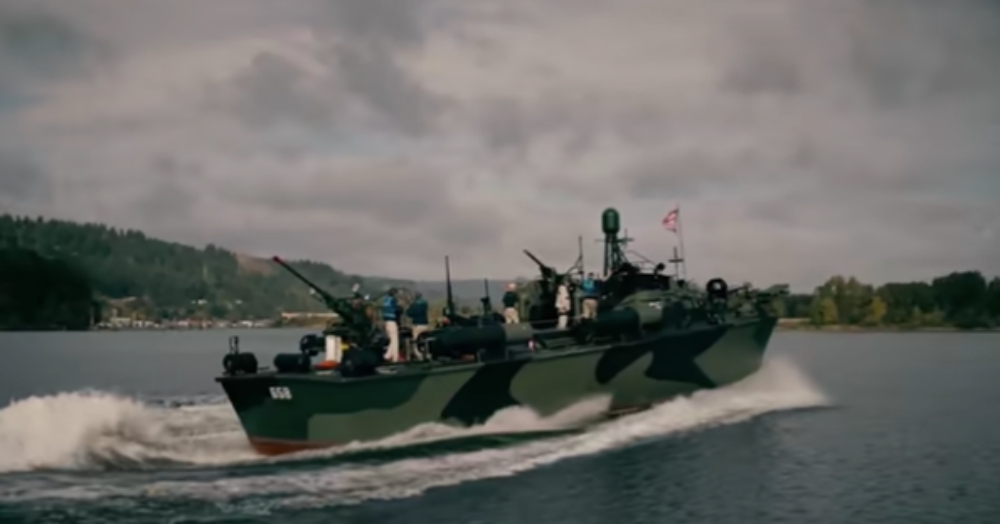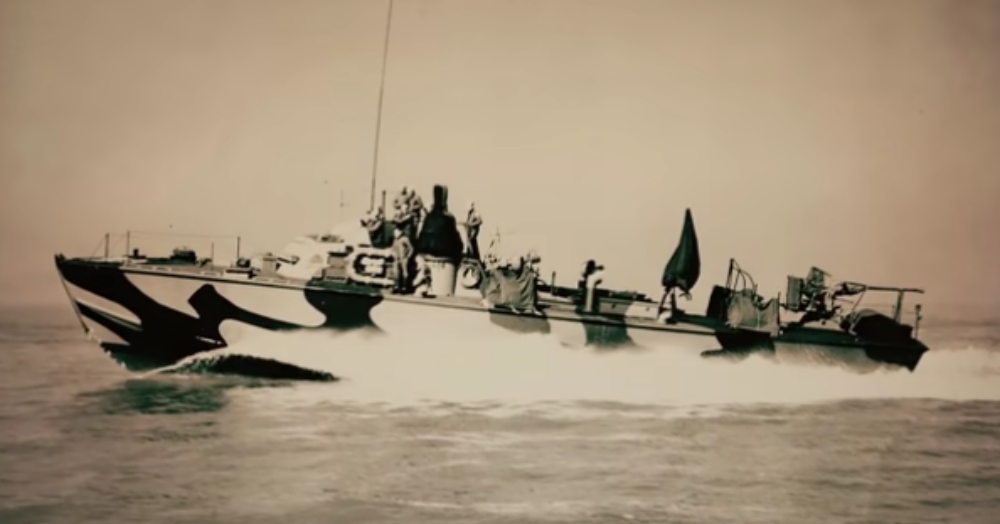
PT Boats and General Douglas MacArthur: How The Two Came Together
The mention of the term “PT Boats,” for many of us, brings up the famous story of a PT Boat called PT-109 and the junior naval officer who would go on to become the 35th President of the United States, John F. Kennedy. Or some of us older folk might also remember the TV comedy series “McHale’s Navy,” with Ernest Borgnine, who was the fictional captain of a PT Boat in WWII. This story is about another real and important event that involved PT Boats in WWII.
This story has two pieces to it. The first concerns one of the most fascinating sea assets in the United States Navy during WWII. The second is how U.S. Navy Patrol Torpedo (PT) Boats played a role in Gen. Douglas MacArthur’s escape from the Philippines in March of 1942 and his return to the Philippines three years later in March of 1945.

First, the PT Boats. These unique fighting boats were fast, low riding, and multi-missioned. The PT boat was conceived of and tested first for U.S. Navy purposes in 1939 before it really had a mission to undertake. The surprise attack at Pearl Harbor would begin its rapid evolution into the most heavily armed ship for its size in the entire U.S. Navy. Its missions were diverse and extremely important to the success of the war in the Pacific theater.
These sleek PT Boats were 80 ft. long and were powered by super-charged Packard V-12 Marine Engines that could produce up to 1,500 horsepower. With full tanks, these boats had a range of 250 to 500 miles at 35 knots. They were armed with one 20-mm Oerlikon cannon at the stern and two twin M2 12.7-mm or 7.6-mm Lewis machine guns mounted on rotating turrets. Their main armament was two or four 21-inch torpedo tubes launching Mark 8 torpedoes that weighed about one ton each. The PT Boat had a three-to-six-foot draft, had a low profile in the water, and was highly maneuverable.
If you remember, the Japanese began their attack and invasion of the Philippines on December 8, 1941, just 10 hours after their attack at Pearl Harbor. The Philippines, at that time, was still an American Territory, so Japan’s intentions were to invade and conquer the islands for strategic reasons, but also to attack again, to disrupt American interests and capabilities in the Pacific.
At the time, Gen. Douglas MacArthur was in command of the forces in the Philippines, and the Japanese invasion forces quickly had the Americans, Filipinos, and other allied troops trapped on the island of Corregidor. The situation had become desperate, and it was determined that MacArthur was too valuable to be captured by the Japanese, so a plan was hatched to get him out of there before the Japanese completed their invasion and before the final surrender of the remaining American forces that took place on May 6, 1942.

On the night of March 11, 1941, four U.S. Navy PT Boats were given the mission to pick up MacArthur and get him past the Japanese naval blockade that had surrounded Corregidor. The four PT Boats slipped in under cover of night and picked up MacArthur, members of his family, and some of his command staff. Slowly, quietly, the PT Boats were able to slip past the Japanese ships and were able then to take MacArthur to the island of Mindanao, where he and the others were put on a B-17 and flown to Australia.
That was not the end of the relationship between MacArthur and these U.S. Navy PT Boats. You may remember the famous quote from MacArthur at the time, when he told the people of the Philippines, “I shall return!” Well, three years later, in March of 1945, it was another PT Boat, PT-141, that would famously return Gen. MacArthur to the Philippines.

The U.S. Navy PT Boats had a well-deserved reputation for fighting skills during WWII in the Pacific. They patrolled constantly to recon Japanese ship and troop movements. They sank Japanese submarines, destroyers, cruisers, and coastal shipping ships. They were used on many occasions to find and rescue downed U.S. pilots and were involved in many other types of missions.
The Veterans Site honors and thanks all who served on the U.S. Navy Patrol Torpedo Boats during WWII. Your efforts were vital in the defeat of the Imperial Japanese naval forces. You, too, were examples of the Greatest Generation.